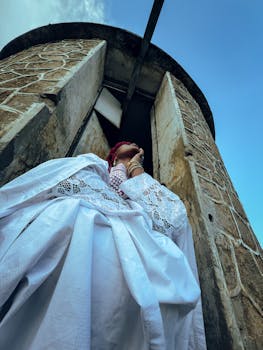
**
Wimbledon's pristine all-white dress code: a tradition steeped in history, or an outdated rule clinging to a bygone era? For over a century, the Championships have enforced a strict dress code, sparking periodic controversies that continue to fuel debate about fashion, tradition, and the very essence of this prestigious tennis tournament. This deep dive into the history of Wimbledon's all-white attire explores the reasons behind the rule, the challenges it presents, and its enduring impact on the sport and its players.
The Genesis of Wimbledon's All-White Tradition:
The origins of Wimbledon's all-white dress code are surprisingly less glamorous than you might imagine. It wasn't a carefully considered aesthetic choice, but rather a practical necessity born from the limitations of early 20th-century technology. Before the advent of readily available, colorfast dyes, colored clothing tended to bleed and stain, potentially ruining the crisp white of the playing surfaces. This was especially crucial on grass courts, which were more susceptible to staining. Therefore, the all-white attire minimized the risk of unsightly marks and maintained the pristine appearance of the hallowed grounds.
Early Enforcement and Subtle Changes:
The initial enforcement of the all-white rule wasn't as rigid as it is today. Early photographs showcase players with subtle variations in their attire – perhaps a colored undershirt peeping through or a hint of color in their accessories. However, as the tournament gained prestige and the demand for uniformity increased, the rules became stricter. This transition reflected a growing emphasis on tradition and a more formal presentation of the sport.
The Modern Era and the Rise of Athlete Expression:
The late 20th and early 21st centuries witnessed a significant shift in sports culture. Athletes became more conscious of their personal branding and used their attire to express individuality. The all-white rule at Wimbledon, therefore, inevitably came into conflict with this growing desire for self-expression.
Notable Controversies and Rule Relaxations:
The all-white dress code at Wimbledon has not been without its challenges. Over the years, several players have pushed the boundaries, resulting in significant controversies:
- Undergarments: Subtle variations in undergarment colors have regularly sparked debate. The line between "all white" and subtle hints of color is sometimes blurred, causing friction between players and officials.
- Shoe Issues: While predominantly white, the intricacies of shoe design and the use of subtle logos or branding on footwear have also led to scrutiny.
- Roger Federer's 2013 Incident: A seemingly minor detail - a hint of orange visible on Federer's soles - triggered a discussion regarding the interpretation of the rules, highlighting the ambiguity that often exists within the regulations.
- The 2023 Wimbledon Controversy: The more recent focus on undergarments and the visible color of sports bras underneath white outfits underscores that the controversy continues even with the rule's long history.
These incidents highlight the tension between upholding a revered tradition and allowing for individual expression within a sporting context. While Wimbledon has remained steadfast in its adherence to the predominantly white dress code, there have been minor relaxations over the years to address some concerns. For example, limited use of colored logos and branding is sometimes allowed.
The Arguments For and Against the All-White Dress Code:
The debate surrounding Wimbledon's dress code is complex and involves various perspectives:
Arguments in Favor of the All-White Tradition:
- Preservation of History: Proponents argue the all-white attire is an integral part of Wimbledon's heritage and contributes to its unique identity and prestige. It evokes a sense of tradition and elegance, associating the tournament with a distinct visual aesthetic.
- Maintaining the Look and Feel: The uniform attire contributes to the overall aesthetic of the championship, creating a visually cohesive and timeless experience for both players and viewers.
- Respect for the Tradition: Many believe it shows respect for the history and traditions of the tournament.
Arguments Against the All-White Dress Code:
- Lack of Individuality: Critics argue the strict dress code limits individual expression and creativity, preventing players from showcasing their personalities through their outfits.
- Outdated Regulations: In the modern era of athletic branding and self-promotion, the all-white rule seems increasingly outdated and restrictive.
- Heat and Comfort: Some players argue the all-white attire can exacerbate heat issues, particularly during hot weather. This is especially relevant with the growing awareness of the impact of environmental concerns and athlete health.
The Future of Wimbledon's Dress Code:
The all-white dress code at Wimbledon is unlikely to disappear entirely in the foreseeable future. The tournament's governing body values tradition deeply and views the dress code as a significant element of the championship's identity. However, minor adjustments and clarifications are likely to continue as a response to ongoing debate and advancements in clothing technology.
The Wimbledon dress code debate illustrates the ongoing tension between honoring a long-standing tradition and adapting to modern trends and values. As tennis evolves and athletes increasingly strive for individuality, the future of the all-white dress code at Wimbledon will continue to be a topic of considerable discussion and possibly further, subtle evolutions. The balance between honoring history and acknowledging the changing landscape of sports is a challenge that Wimbledon will likely grapple with for years to come. The search for a solution that simultaneously upholds tradition while allowing a degree of modern expression remains an intriguing element of the Wimbledon experience.




















